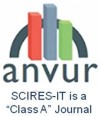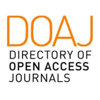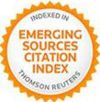Abstract
Keywords
Full Text:
PDFDOI: http://dx.doi.org/10.2423/i22394303v9n1p91
References
Antoniou, A., & Wallace, M., Lopez-Nores, M., Naudet. Y., Solano, J., Bikakis,, A., Jones, C., Vassilakak, E., & Padfield, J (2018). Cultural Informatics. In Proceedings of the Workshop on Cultural Informatics co-located with the EUROMED International Conference on Digital Heritage 2018 (EUROMED 2018) (pp. 1-10). Retrieved from http://ceur-ws.org/Vol-2235/
Bergvall-Kåreborn, B., & Ståhlbröst, A. (2009). Living Lab: an open and citizen-centric approach for innovation. International Journal of Innovation and Regional Development, 1(4), 356-370.
CrossCult (2017). Pilot end-user applications. Public EU Deliverable Report. Retrieved from https://www.crosscult.eu /fileadmin/files/Deliverables/CrossCult-D5.1.pdf
EGMUS European Group on Museum Statistics (2016). Complete Data. Retrieved from http://www.egmus.eu/nc/en/statistics/complete_data/
Jansson, D. G., & Smith, S. M. (1991). Design fixation. Design studies, 12(1), 3-11.
Jiang, L., Clark, B., & Turban, D. (2015). Creating Breakthroughs: The Role of Interdisciplinary Idea Networking and Organizational Contexts. In Academy of Management Proceedings (Vol. 2015, No. 1, p.18645). Briarcliff Manor, NY: Academy of Management.
Kitcher, P. (2011). Science in a democratic society. In Scientific Realism and Democratic Society (pp. 95-112). Amsterdam/New York NY: Rodopi.
Marzano, M., Carss, D. N., & Bell, S. (2006). Working to make interdisciplinarity work: Investing in communication and interpersonal relationships. Journal of agricultural economics, 57(2), 185-197.
Mason, C., & Brown, R. (2014). Entrepreneurial ecosystems and growth oriented entrepreneurship. FinalReport to OECD, 30(1), 77-102.
Sanetra-Szeliga, J., on behalf of the CHCfE Consortium (2015). Cultural Heritage Counts for Europe, Krakow: International Cultural Centre, Retrieved from http://www.encatc.org/culturalheritagecountsfor europe
Smith, K. H. (2005). Measuring innovation. Oxford: Oxford University Press.
Vahtikari, T. (2018), Innovation & Cultural Heritage Conference Report. European Commission, Directorate- General for Research and Innovation. Luxembourg: EU Publications Office.
Wegner, D. M. (1987). Transactive memory: A contemporary analysis of the group mind. In Theories of group behavior (pp. 185-208). New York, NY: Springer.
Article Metrics
Metrics powered by PLOS ALM
Refbacks
- There are currently no refbacks.
Copyright (c) 2019 Ioanna Lykourentzou, Angeliki Antoniou

This work is licensed under a Creative Commons Attribution-NonCommercial-NoDerivatives 4.0 International License.
SCIRES-IT, e-ISSN 2239-4303
Journal founded by Virginia Valzano





